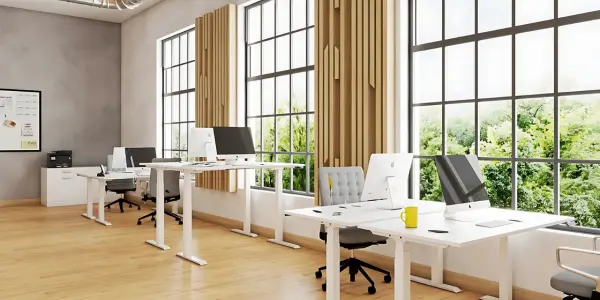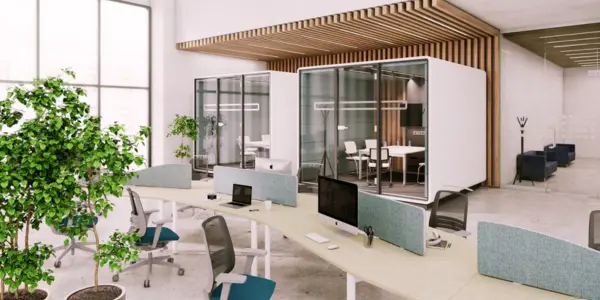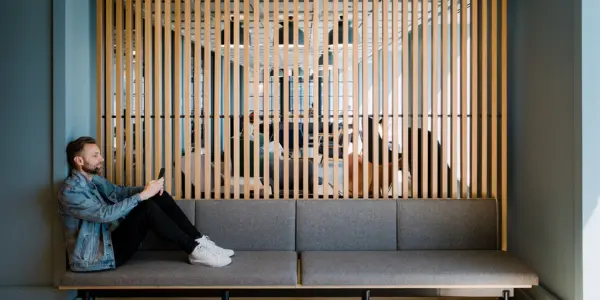How to Make Shared Office Furniture Work for Everyone


The way we use office space has changed dramatically in recent years. Hybrid work patterns, hot-desking, and co-working setups mean several people might use the same desk or chair throughout the week. That shift calls for office furniture designed to work well for everyone, no matter their needs or preferences.
But it’s not just about practicality - shared office furniture can shape how people feel in a space. The right choices can make a workplace more welcoming, inclusive, and productive, while the wrong ones can leave employees uncomfortable and disengaged. For business owners, facilities managers, and those passionate about inclusive spaces, understanding how to make shared furniture work for various users is key to creating offices where people actually want to spend their time.
Start with Inclusive Design Principles
When planning shared furniture, it’s worth thinking beyond looks and basic functionality. Every piece should be adaptable enough to work for different people, on different days, doing different types of work. Adjustable desks and chairs are essential, not only for comfort but also for accessibility. A height-adjustable desk, for example, can easily be set up for wheelchair users, while an office chair with adjustable lumbar support and armrests can suit a wide range of body types and working styles.
It’s also important to consider the various tasks people will be doing. High tables and stools can work brilliantly for quick brainstorming sessions, while lower, more supportive seating is better for long stretches of focused work. Multi-functional pieces, like modular sofas or desks that can be rearranged, give teams the flexibility to shape the space to suit the task at hand.

Shared furniture should go beyond style, offering adaptability - like adjustable desks - for diverse needs.
Design for Accessibility from the Start
A shared space should work for everyone, not just the majority. That means building accessibility into the office's design from day one. Clear, wide walkways make it easier for wheelchair users and those with mobility aids to navigate. Desks with adequate under-surface clearance provide comfortable legroom for all. Small changes, like lever-style handles instead of round knobs, can make a big difference for people with limited hand mobility.
Lighting is another factor that’s often overlooked. While overhead lighting is the norm, adding adjustable task lights gives people control over brightness, which can reduce glare for those with sensory sensitivities or help with detail-heavy work. Acoustic considerations matter too; using sound-absorbing panels or partitions can help create calmer, more focused zones in otherwise open-plan areas.
Balance Privacy and Collaboration
One of the trickiest parts of shared office design is balancing open, collaborative areas with quieter, more private spaces. Open-plan layouts can be great for teamwork, but are not always ideal for concentration. Introducing semi-private booths, acoustic pods, or moveable partitions gives employees more choice over how and where they work.
Furniture itself can be part of the solution. High-backed seating, for example, can double as a visual and sound barrier, while shelving units with integrated planters can break up space without making it feel closed in. Being strategic about where you place collaborative furniture can also help - keeping lively areas separate from focus zones reduces noise spillover.

Semi-private booths can help balance collaborative open spaces with quieter, private areas.
Make Maintenance Part of the Plan
Shared office furniture tends to be used more than furniture in dedicated workstations, so durability matters. Choose materials that are easy to clean, scratch-resistant, and designed to hold up under frequent use. Upholstery should be hard-wearing but also comfortable enough to encourage longer stays when needed.
It’s also worth setting up simple systems to keep things in good condition. For hot-desking areas, that could mean providing personal storage units and encouraging people to reset their space at the end of the day. Even small touches, like desk markers to show when a space has been cleaned, can make a shared environment feel more welcoming and hygienic.
Consider the Needs of Neurodivergent Employees
An inclusive workspace should also consider its neurodivergent employees. People with ADHD, Autism, or other neurodivergences may have different sensory needs than their colleagues. Simple additions, like adjustable privacy screens, softer lighting options, and quiet “cool-down” zones, can make a big difference.
Choice is key. Allowing people to work in different types of seating, at different desk heights, or with varying noise levels can set them up for success. Office interior designers can also work with occupational health or inclusivity experts to ensure that office layouts are functional and genuinely supportive of a range of work styles.

Inclusive workspaces can support neurodivergent employees with features like quiet zones.
The Benefits of Getting it Right
When shared office furniture is thoughtfully planned, the benefits go beyond efficiency. Yes, you make better use of space and often save on costs, but you also create an environment where people feel comfortable, supported, and more engaged in their work.
For workplaces, the goal shouldn’t just be to fill a room with desks and chairs, but to create a space that feels good to be in, where everyone has what they need to do their best work, no matter who’s sitting in the chair that day.
---
Need Office Design Inspiration?
Codex offers expert workspace solutions to help businesses create the perfect office environment. Open an account or contact us today to explore office furniture and accessories that enhance productivity and wellbeing.
Latest Posts

Unlocking The Potential of a Neurodiverse Workplace
Workplaces are already neurodiverse, yet many organisations overlook the strengths of varied cognitive styles. Dave Cormack discusses actionable steps to move from passive acknowledgement to active workplace neuroinclusion.





